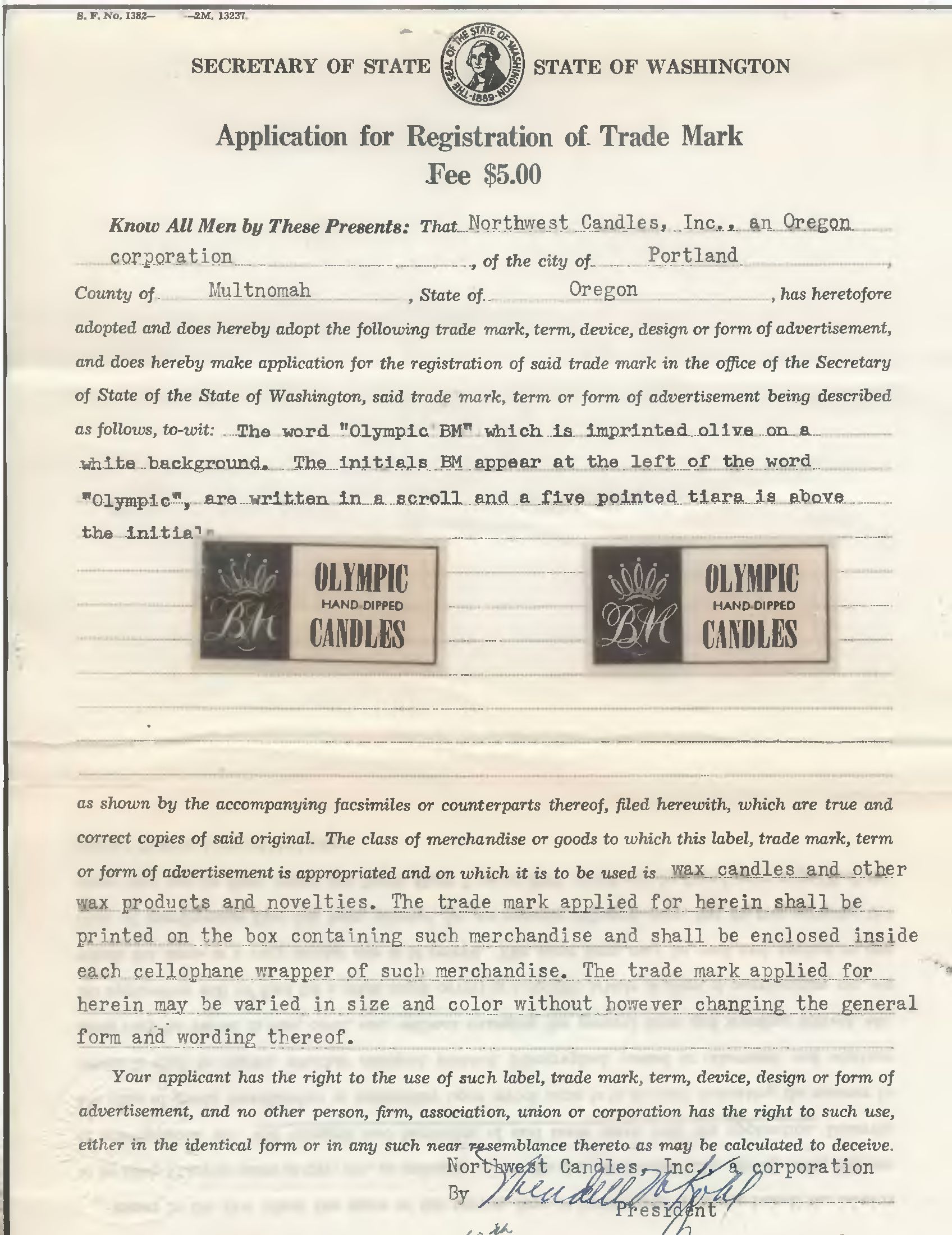Entries in Trademark Law Resources (62)
Be Strategic in Expediting USPTO Trademark Filings
The U.S. Patent and Trademark Office usually examines applications for trademark registration in the order in which they are received.
This means that even if you have priority of rights, your application will be denied if someone filed an application before you for which your trademark is likely to cause confusion — even if the prior filer only beat you by a few minutes or a few days. In such a case, you’d normally need to oppose the prior-filed application to block it (if the application is still pending) or petition to cancel the registration (if the registration has issued).
However, a narrow exception exists. If you are involved in actual or threatened infringement, pending litigation, or have a need to register your trademark in order to secure a foreign registration, for $100, you can petition to make your application “special.” If accepted, your application is given expedited treatment and leap-frogs prior filings.
An application for registration of a mark that was the subject of a previous registration that was inadvertently cancelled or expired will be made “special” upon request. No petition is required.
Being on the verge of launching an advertising campaign, however, doesn’t cut it.
This little-known device can avoid the need for procedural acrobatics. Why wait for a prior-filed application to be published or go through the pain of opposing it if you don’t have to? The smart answer is that you shouldn’t — as long as you’re “special.”
Basics of Trademark Protection in Plain English (Part 3)
Here’s the last installment of “Basics of Trademark Protection in Plain English.” It focuses on “defensive” considerations in protecting trademark rights; remedies; and trademark law resources.
D. “Defensive” Considerations
The “offensive” considerations discussed above focus on the things a trademark owner should consider in order to maximize and enforce its rights. There are “defensive” considerations as well, which mainly focus on not infringing a prior user’s trademark rights. This involves not selecting (and wasting money by investing in) a trademark that would cause a likelihood of consumer confusion with a senior user – both at common law in the same geographic market, and through the statewide or nationwide rights that a prior owner might have through registration. This, in turn, requires one to search the PTO’s database, Google, domain name registrations, and industry databases to learn the trademarks that other sellers have selected, and with which goods and services. Truly comprehensive searches can involve engaging a sophisticated vendor like Thomson Reuters to capture a large universe of relevant hits, which trademark attorneys can analyze to determine the risk of triggering a trademark infringement claim. Again, the relevant jurisdiction’s multi-factor test will control, and it’s up to the trademark lawyer to help her client avoid a likelihood of confusion. While it’s impossible to avoid all risk, doing one’s due diligence can minimize the chance that a prior trademark owner will demand that your client stop using the trademark it has adopted.
E. Remedies
A trademark owner’s main remedy in a lawsuit is the injunction – a court order enjoining the trademark wrong from continuing. A trademark owner can also seek lost profits and to disgorge any wrongful profits the infringer received through the infringement. However, proving damages to the reasonable degree of certainty that a court requires can be difficult. Therefore, damages usually take a back seat to the injunction. A successful litigant (either plaintiff or defendant) can also seek an award of its attorney’s fees and court costs incurred in the litigation, but such awards are not routine. (Under Washington law, they are discretionary, and under federal law they may only be awarded in “exceptional” cases.) For this reason, both sides usually assume they will pay their own freight in trademark litigation, win, lose, or draw.
F. Resources
At the federal level, trademark law is largely driven by the Lanham Act, 15 U.S.C. §§ 1051, et seq. In Washington, the largely parallel trademark statute is RCW 19.77. An obvious and unavoidable place to start when learning about trademark law is the statutes themselves, and the cases that interpret the statutes. Federal and state case law also flesh out the contours of common law trademark rights, which predate both statutes, are incorporated in them, can operate independent of them. Trademark owners also can look to McCarthy on Trademarks and Unfair Competition, and Gilson on Trademarks. Both provide encyclopedic, multi-volume analyses of trademark law, including important subtopics like cybersquatting, false advertising, counterfeiting, fair use, online liability, licensing, international trademark rights, and practice before the U.S. Trademark Trial and Appeal Board, the PTO’s administrative law arm. One or both of these invaluable treatises are available at Seattle’s law school libraries, as well as at the law libraries of Washington’s state and federal courts.
Search Washington Trademark Filings for Free
 A sample application for statewide trademark registration.
A sample application for statewide trademark registration.
Users can now search filings from 1888 to 2011 for free
It’s now possible to search Washington trademark registrations for free.
The Washington Secretary of State’s digital archives have added trademark records to its searchable online database.
Start with the digital archives home page. Select “Trademark Records” from the dropdown menu under the “Search by Keyword” or “Detailed Search” options, enter the search criteria, and click the “Search” button.
The “Detailed Search” option enables searching by keyword, registration number, owner name, document type (amendment, application, assignment, renewal, and reservation), and range of filing dates.
Results display the trademark number, owner’s name, document type, received date, and even a copy of the application, specimens of use, and registration certificate.
The site states the database includes “active and inactive trademark records filed with the Secretary of State’s Office, Corporations Division from 1888 to 2011.”
This is a pretty awesome tool that previously was available only through third-party vendors.
Thanks to the State of Washington for making this available. And thanks to Shannon Whitmore for letting me in on the secret!
Trademark Law in the Age of Social Media: CLE Coming Soon
 When the First Amendment collides with the Lanham Act,
When the First Amendment collides with the Lanham Act,
the First Amendment usually wins. (As is evident from the above parody.)
I’m speaking at an upcoming CLE on social media.
My topic, of course, is trademark law in that context.
My presentation materials are here. I will publish my slides when the presentation is over.
The issues are good, as well as the slate of other speakers. More details available here.
The CLE spans two days: Sept. 6 and 7, at the Washington State Convention Center.
If you attend, please say hello!
Patent and Trademark Office Offers Excellent Trademark Resources
 Screen shot from the U.S. Patent and Trademark Office’s Web site
Screen shot from the U.S. Patent and Trademark Office’s Web site
The PTO has some excellent resources for learning about trademark law. Videos, even. They’re all free and are collected here.
My favorite tool is the Trademark Electronic Search System (TESS) database. I use it constantly. It’s accessible here.
Click the “Basic Word Mark Search (New User)” hyperlink, click the “Live” radio button, type the desired trademark into the search box, and click the “Submit Query” button. The results will give you hyperlinks to all pending trademark applications and registrations in the PTO’s system. The hyperlinked pages provide basic information about each trademark — the owner, the associated goods and services, the application date, etc. And best of all, you can drill down further from that page by clicking the blue “TDR” button, which provides links to the various documents in the application file — from application to registration certificate. It’s an invaluable tool that I use every day.
The database has its limitations. For example, it doesn’t provide information about a party’s use of the trademark, and you must include confusingly similar trademarks in your search for the results to be meaningful. But it’s a heck of a resource that shouldn’t be limited to trademark attorneys. Anyone can use it, and they should.
